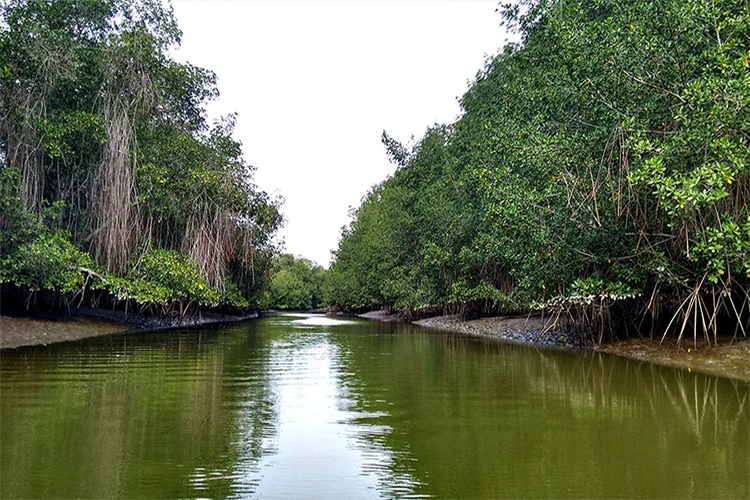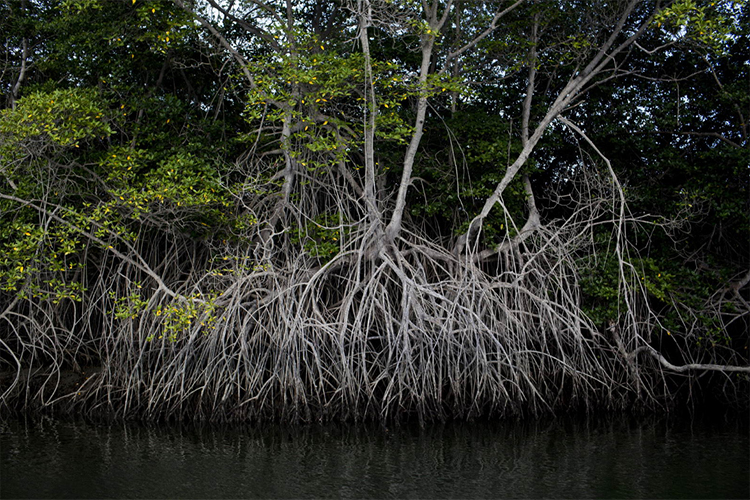MANGROVES OF TUMBES




Information
Created in 1988, on March 2, this sactuary recollects a unique sample of the mangroves forests in Peru. Its has 2.972 hectared and it is located in the Zarumilla province, Tumbes.
The mangroves grow in the encounter between the salt water of the ocean and the fresh water of the rivers, in the zones that are close to the Ecuador. They are one of the most productive ecosystems of the planet because they proportion wood, stakes and shoring, besides a natural barrear against the erosion that the waves and the tide provoque.
They are also the home of a wide range of wildfire and the place were a l ot of birds, crustaceans, fishes and mammals species reproduce.
The Tumbes Mangroves are comprised by four species: the salty mangrove (Avicennia germinans), the red one (Rhizophora mangle), the white one (Laguncularia racemosa) and the button one (Conocarpus erectus).
34 species of crustaceans, 33 species of snails, 24 species of mollusks with shell and 105 types of fishes swimm in its waters. They are also resources that the mangroves proportion to the local people because they practice artisenal fishery. There is also an endengered breed living in the Tumbes Mangrooves: the cocodrile of Tumbes (Crocodylus acutus).
Numerous flocks of birds fly in the sky. There are different species of egrets, frigate birds and others habit this ecosystem. Regarding the mammals, animals like the mangrove bear or the racoon (Procyon cancrivorus) live in the area.
Because of how rich the mangroves are, the Peruvian Navy guards the zone and the access to the mangroves.
To arrive to the mangroves, you can go to Mancora's boulevard and ask for one of the excursion tours to the mangroves.
You can also arrive there by your own. To do so, you have to pass through Tumbes city, in the 1246 kilometer. From this point, you have to go to Zarumilla, 20 kilometers away, and then head to El Algarrobo, 9 kilometers away. There, you will find the INRENA Checkpoint.
Information
Created in 1988, on March 2, this sactuary recollects a unique sample of the mangroves forests in Peru. Its has 2.972 hectared and it is located in the Zarumilla province, Tumbes.
The mangroves grow in the encounter between the salt water of the ocean and the fresh water of the rivers, in the zones that are close to the Ecuador. They are one of the most productive ecosystems of the planet because they proportion wood, stakes and shoring, besides a natural barrear against the erosion that the waves and the tide provoque.
They are also the home of a wide range of wildfire and the place were a l ot of birds, crustaceans, fishes and mammals species reproduce.
The Tumbes Mangroves are comprised by four species: the salty mangrove (Avicennia germinans), the red one (Rhizophora mangle), the white one (Laguncularia racemosa) and the button one (Conocarpus erectus).
34 species of crustaceans, 33 species of snails, 24 species of mollusks with shell and 105 types of fishes swimm in its waters. They are also resources that the mangroves proportion to the local people because they practice artisenal fishery. There is also an endengered breed living in the Tumbes Mangrooves: the cocodrile of Tumbes (Crocodylus acutus).
Numerous flocks of birds fly in the sky. There are different species of egrets, frigate birds and others habit this ecosystem. Regarding the mammals, animals like the mangrove bear or the racoon (Procyon cancrivorus) live in the area.
Because of how rich the mangroves are, the Peruvian Navy guards the zone and the access to the mangroves.
To arrive to the mangroves, you can go to Mancora's boulevard and ask for one of the excursion tours to the mangroves.
You can also arrive there by your own. To do so, you have to pass through Tumbes city, in the 1246 kilometer. From this point, you have to go to Zarumilla, 20 kilometers away, and then head to El Algarrobo, 9 kilometers away. There, you will find the INRENA Checkpoint.
